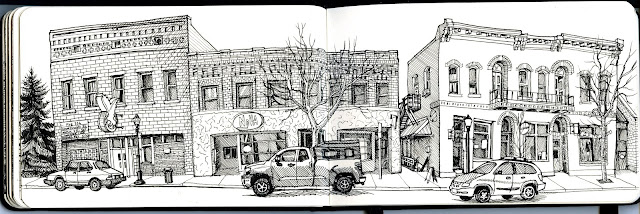When asked what kind of art I make, I say "I sketch what I see." That's it. I go out on location and sketch what I see. Or I stay home and sketch what I see. The "what I see" part is what's important to me. And that brings with it all sorts of other ideas to explore. Because what do we see?
My style of sketching is a mixture of a few different approaches to observational art-making. There's the still-life/in-studio tradition where the artist narrows their focus on just a small portion of their field of view. There's plein-air landscape painting, where often the goal is to widen the field of view as much as possible and take in sweeping vistas. There's architectural and perspective drawing, where the challenge is to effectively depict human-made spaces with their corresponding geometry in a convincing way., And there's figurative art, where capturing the human form in one way or another is the goal. You can find examples of each of these interests in my sketches.
Not long after I started sketching I realized I was having trouble with drawing space. It was hard to wrap my head around. I'm the kind of artist who is drawn to a problem like this. What was I missing? I learned the basics of linear perspective drawing in school, and I was more or less proficient. But applying those ideas to a live observational sketch made my drawing feel rigid and clinical. The sketch just didn't feel alive. So I started sketching as much space as I could. Interiors, exteriors, urban areas, landscapes. I found myself "zooming out" and trying to include as much space as possible in the composition.
I started a project wherein I would draw all the buildings on Main Street in Bozeman, Montana from across the street, starting on one block and working my way down, then crossing the street and doing the other side.
from three letter word for art https://ift.tt/2H79NUo Art









No comments:
Post a Comment